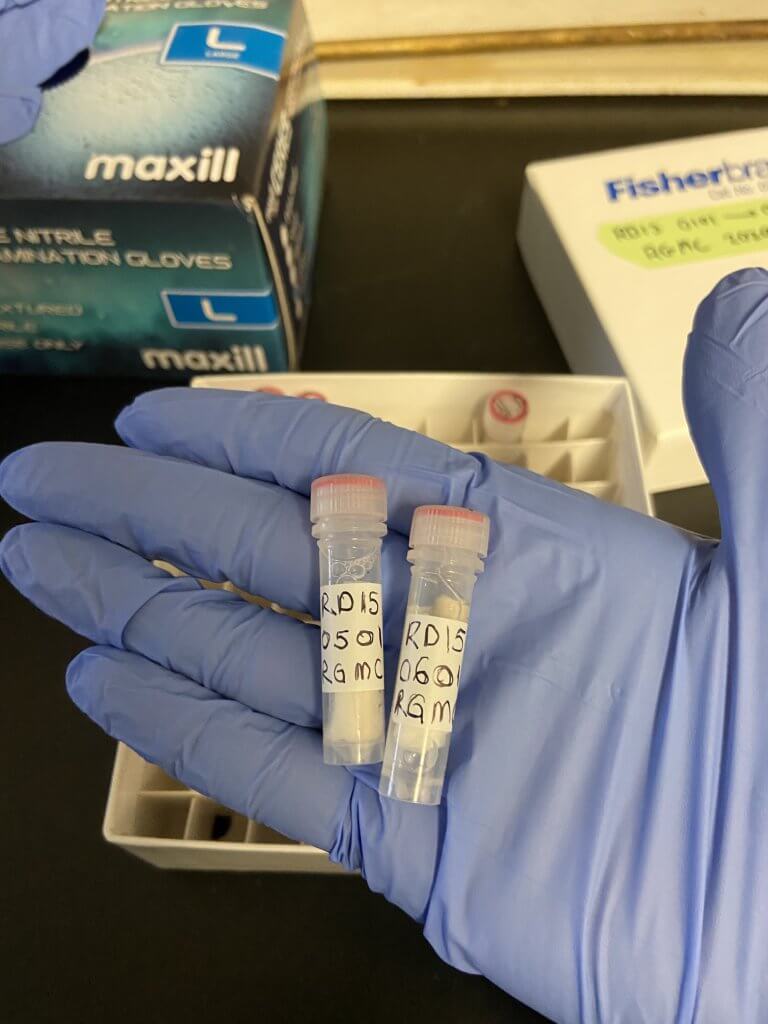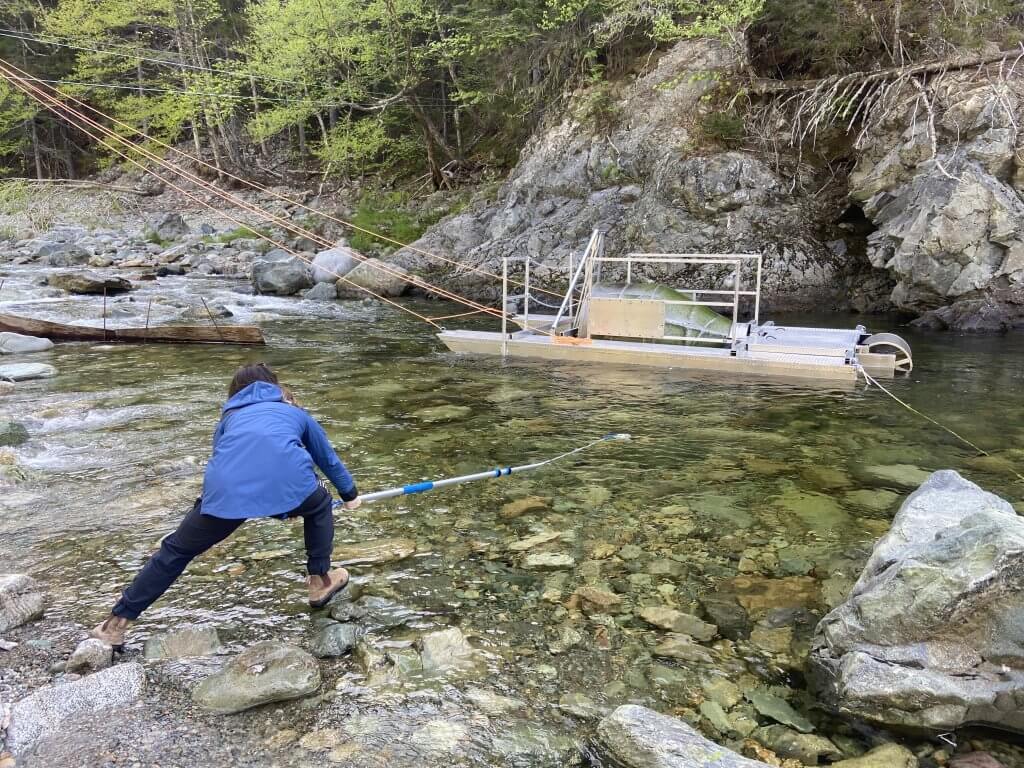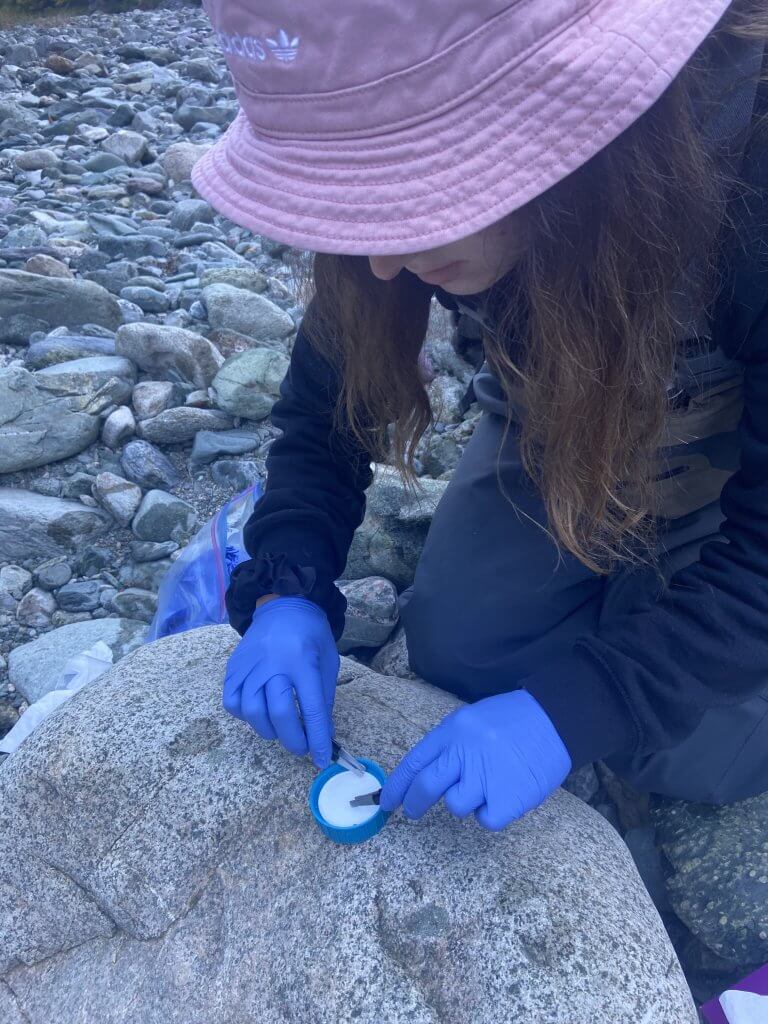
What’s in a water sample? Harnessing the power of eDNA analysis for species detections in freshwater ecosystems
– By Rina Guxholli –
Long before the world of environmental DNA was introduced to ecologists, forensic biology was already harnessing the power of DNA as a tracer for who, or what, may have been present at a crime scene. Fast forward a few years, and ecologists implemented this strategy in the natural environment (cooler than a crime scene, depending on who you ask).

The use of environmental DNA (or eDNA)-based technology has made enormous strides in the past two decades as a way to detect, quantify, and monitor species living in a variety of environments. Scientists can paint a picture of wildlife that inhabit or inhabited an area based on genetic material left behind from samples like feces, fur, scales, or skin. This monitoring method has been applied to aquatic samples from marine and freshwater environments, soil samples from the land, and even air samples vacuumed through a filter. Through a single environmental sample, a treasure trove of biodiversity data can be captured. But how exactly can we harness the data within an environmental sample?
In the lab, we apply DNA amplification and analysis techniques to pinpoint exactly which species are present in the samples. This process can single out DNA on a species-by-species basis, giving us a robust picture of ecosystem composition. To single out eDNA released from a species, we often use quantitative polymerase chain reaction (qPCR): a powerful technology used for the detection, quantification, and measurement of DNA present in a sample. This tool uses synthetic fragments of DNA nucleotides called assays which are designed to be complementary to the DNA of a species of interest. In the qPCR chemical reaction, assays are combined with the eDNA sample and selectively bind to the DNA of the target species. The qPCR process then amplifies the matching DNA strands millions of times. This amplification is visualized on a computer—if amplification occurs, then the target species was very likely present in the water sample! Assay development requires rigorous analysis of target and non-target genetic sequences: a well-designed assay will exclusively bind to the target species and avoid cross-amplification with co-occurring species.
This is where the work from the Genomic Network for Fish Identification, Stress, and Health (GEN-FISH) comes in. GEN-FISH is a national team of researchers, professionals, and community members working together to determine the location and abundance of Canada’s 200+ freshwater fishes through the power of eDNA. The goal is to develop eDNA assays for all freshwater fish in the country so we can detect any species, from any eDNA water sample, taken from any location in Canada. It’s no easy feat, but incredible steps have been made to develop assays for fishes from multiple regions in Canada.

My work at the University of New Brunswick involved developing eDNA qPCR assays for freshwater and freshwater-dependent fishes in Atlantic Canada, led by Dr. Scott Pavey (UNB). My objective was to develop assays for twenty key freshwater fishes found in the region, so they can be applied widely to eDNA monitoring projects within GENFISH and beyond. To do this, genetic sequences of the twenty target species, as well as hundreds of closely-related and co-occurring fishes were obtained, and the assay development work began. Candidate assays were developed and tested thoroughly—on the computer using specialized genetic sequence analysis software, and in the laboratory using DNA extracted from tissue samples of target and non-target species. After thorough testing, four of the assays were ready to be tested on eDNA water samples taken from Fundy National Park. In partnership with Parks Canada and Dr. Kurt Samways, eDNA sampling was conducted along long stretches of Upper Salmon and Point Wolfe Rivers to monitor and detect Inner Bay of Fundy Atlantic Salmon, Brook Trout, American Eel, and Eastern Blacknose Dace. Our findings were in lockstep with the extensive electrofishing and surveying efforts being done at Fundy National Park—we found strong and clear presence of all four target fishes in both rivers within the Park through qPCR analysis of the eDNA samples.
Our work adds to the rapid and expansive research for eDNA-based technology as a biodiversity monitoring and quantification tool. Further, the twenty target species from our work have broad geographic ranges in North America, spanning outside of Atlantic Canada. The assays we developed and optimized can be used for their detection through eDNA, in many different contexts and applications locally and internationally. qPCR assays are an essential tool used to detect species when conducting eDNA detection studies. The findings from our study will incentivize continued implementation of eDNA-based monitoring techniques to assess the status of wildlife populations and habitats—empowering scientists and researchers to develop timely and efficient conservation strategies for years to come.

Rina Guxholli is a Master of Science graduate from the University of New Brunswick. She completed her undergraduate degree at the University of Windsor with an honour’s project examining the effects of temperature and abundance on Redside Dace eDNA detection in microcosm settings, which led her to the expansive world of molecular ecology and eDNA research. Presently working as a research assistant with University of Manitoba collaborators, she is expanding her research to focus on conservation of aquatic species all across Canada. Find her at rinaguxholli.ca, @rinaguxholli on Twitter, or rina.guxholli@unb.ca.
bay of fundy, eDNA, fundy national park, gen-fish, genomic network for fish identification stress and health, rina guxholli, university of new brunswick
